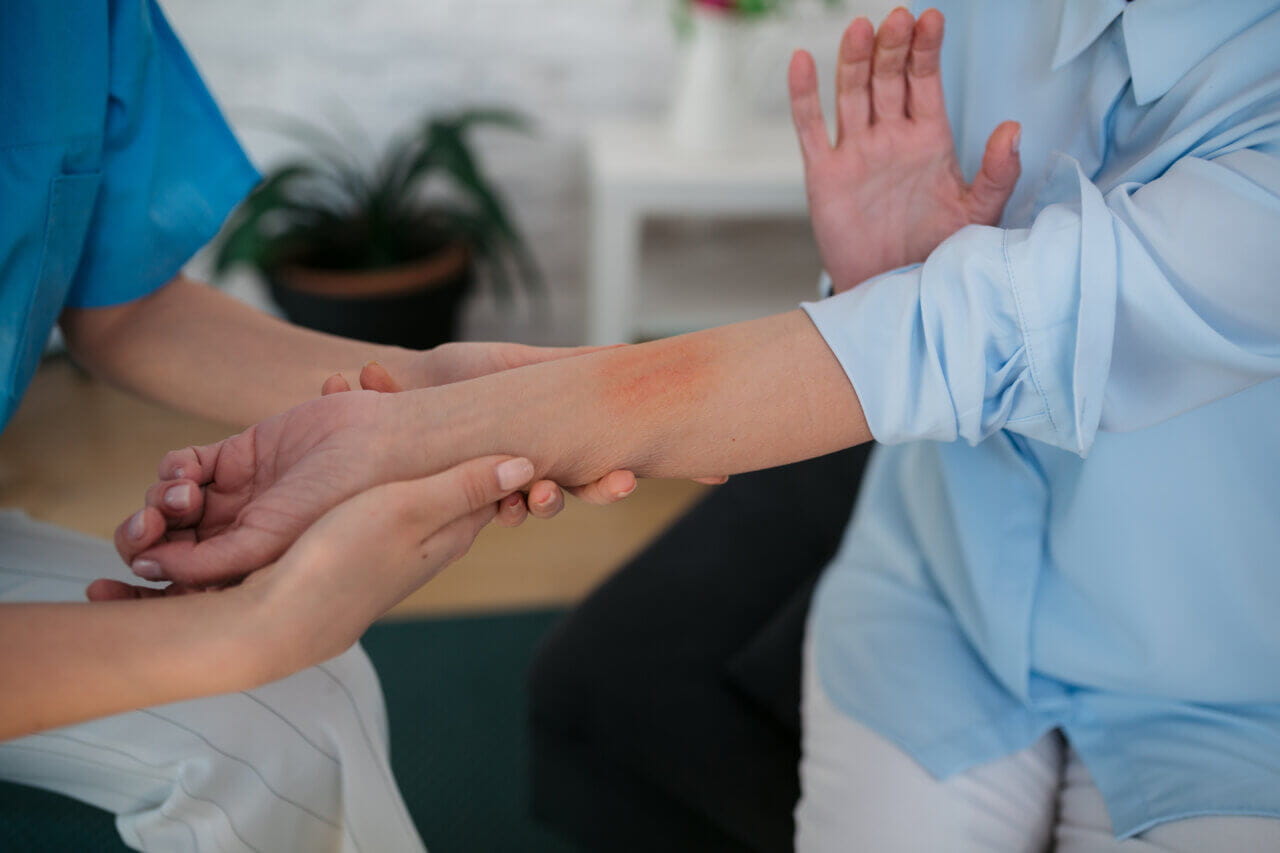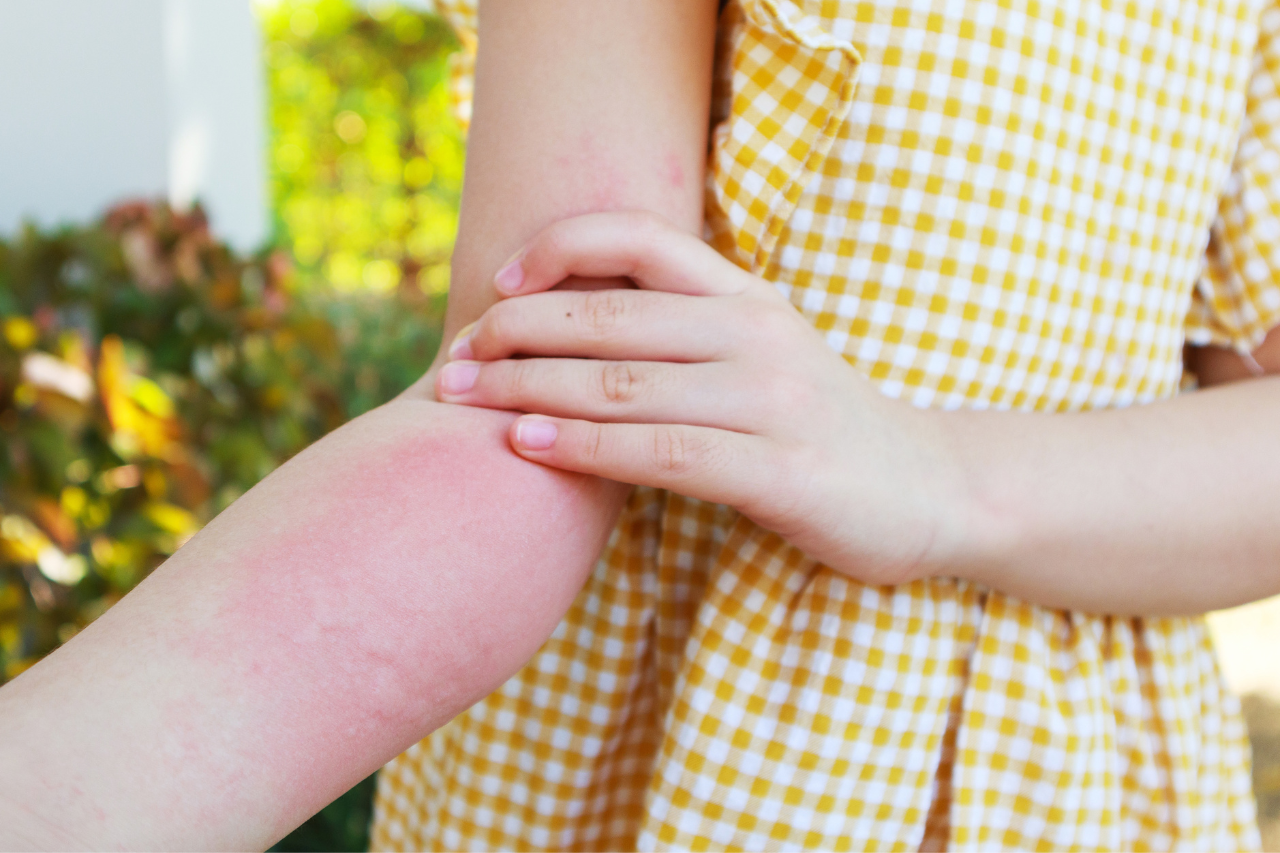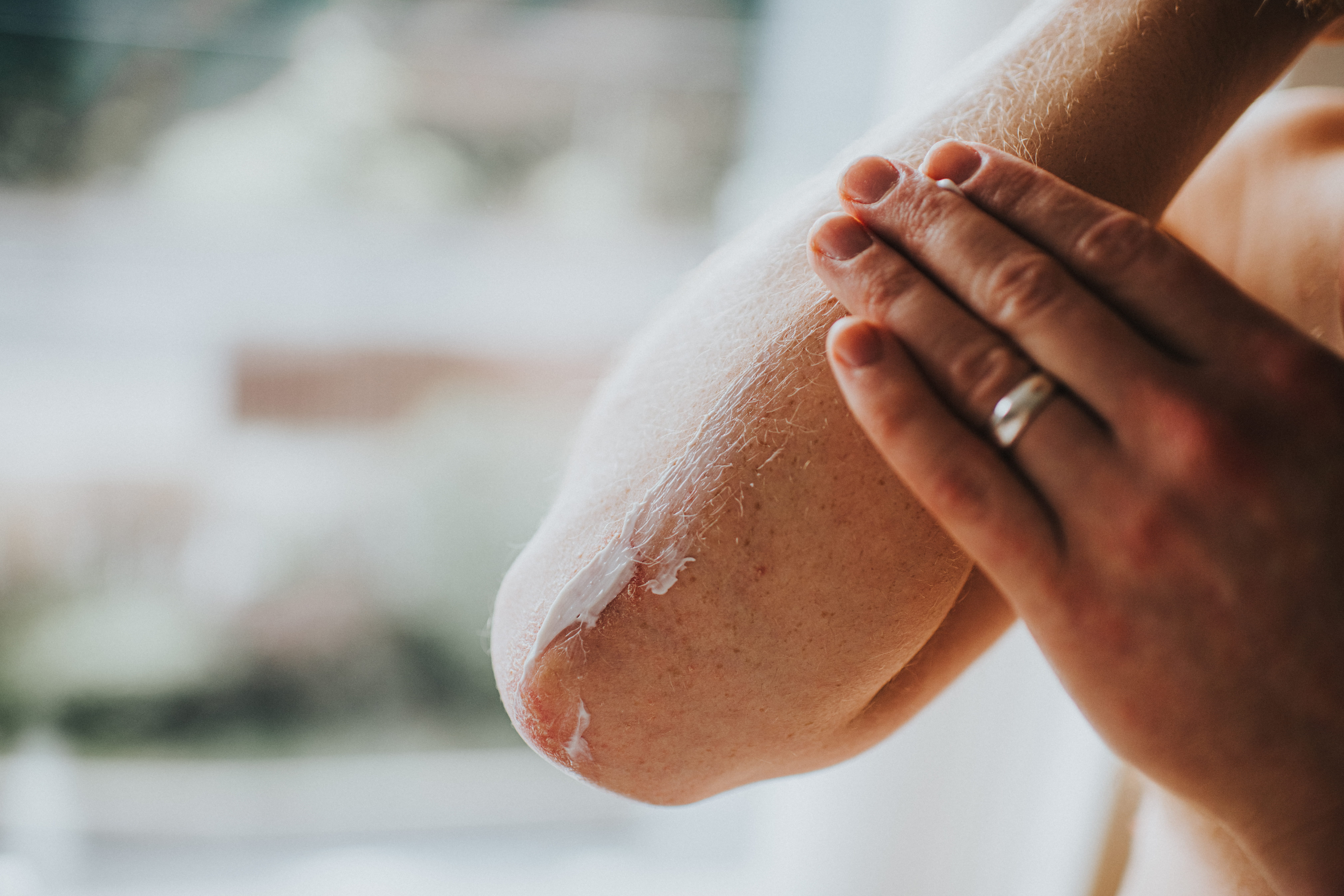What Are the Differences Between Rashes and Hives?

Are hives and a rash the same thing? The primary difference between hives and rashes is that hives are a type of rash. Because the two are related but can be symptoms of different medical conditions, it’s helpful to know a little about hives vs. rashes.
But ultimately, when it comes to rashes vs. hives, both should get your attention and prompt you to decide whether you need medical attention or just some type of home treatment. This article provides helpful information.
What Are Hives?
Hives are red, pink, or skin-colored bumps on the skin that develop quickly. They can be irregularly shaped or round and appear as tiny spots or large patches.
Hives can develop anywhere on the body. That includes the ears, throat, face, lips, and tongue. The surface of a hive is smooth as a result of the fluid that has gathered below the skin to cause it to rise.
Also called welts or wheals, hives tend to be itchy. They also tend to change in shape, size, and location and may disappear and reappear in different configurations, including joined plaques.
Allergic reactions can cause hives. However, many cases of hives aren’t allergy-related. They can result from a wide range of issues, such as:
- Blood transfusions
- Infections like hepatitis, strep throat, urinary tract infections (UTIs), etc.
- Contact with latex
- Taking certain medications
- Insect stings or bites
- Eating certain foods
- Contact with chemicals like food additives and preservatives
- Exercise, sun exposure, heat, or cold
- Stress
- Underlying disease
What Is a Rash?
A rash is an area of skin that rapidly develops color changes and “eruptions,” often in the form of small bumps. The skin may also feel rough and have a cracked or scaly appearance.
Some rashes itch. In other instances, the sensation is more painful. A rash can also blister.
Rashes may be widespread on the body or appear only in one or two areas. Affected skin may be warm to the touch and swollen.
Several things can cause rashes, including:
- Allergies
- Infections
- Medications
- Insect or spider bites
- Jellyfish stings
- Chemical exposure
- Psoriasis
- Chafing
- Contact with poisonous plants
- Infections
- Other irritating substances
How to Tell the Difference Between Hives and a Rash
Although hives and rashes are related, it’s important to be able to tell the difference between them. That distinction can be important when considering whether to seek medical treatment.
Your doctor can tell the difference between hives and a rash. So, if you’re ever unsure about what’s affecting your skin, you should contact them.
In general, the difference between hives and a rash can be summarized as shown below.
| Hives | Rash | |
| Appearance | Red or skin-colored bumps May change size, shape, or color Blanch (turn white) briefly when pressed Develop in clusters anywhere on the body and can spread Bumps may come together to affect large areas Can disappear rapidly or be long-lasting |
Red skin discoloration May change in skin texture Can be rough or scaly May blister or form welts Appear swollen |
| Accompanying symptoms | May cause intense itching Can cause skin redness |
Can be itchy or painful May appear irritated or raw Can make skin warm to the touch |
Looking at hives vs. rash pictures can also help you understand the differences.
Are Some People More Likely to Get Hives or Rashes?
If you get hives or rashes but know others who don’t, you may wonder if some people are more prone to developing these skin conditions. The answer is that people who tend to be affected by allergies are more likely to get hives or rashes. However, anyone can develop these conditions at any age.
When Should You See a Doctor for Hives and Rashes?
If you frequently have hives or rashes, your doctor can talk with you about prevention and treatments. If you develop hives or a rash with other concerning symptoms, you should get prompt medical attention.
This includes:
- Trouble breathing
- Fever
- Constriction of itching in your throat
- Dizziness
- Severe pain at the site of the skin irritation
- Confusion
- Diarrhea
- Rash affecting your genitals, eyes, or mouth
- Severe pain in your abdomen, neck, or head
- Swelling in your arms or legs, throat, face, lips, or eyelids
- Lack of coordination or muscle weakness
- Open blisters or sores
Hives vs. Rashes: Key Takeaways
Hives and rashes are similar conditions that affect the skin. However, they can have different causes and indicate different underlying conditions. Should you experience either accompanied by any other symptoms, you should contact your doctor promptly or seek urgent medical care.
Talk with Your Baptist Health Doctor About Hives or Rashes
If you’re concerned about hives or a rash you’ve developed, you should contact your Baptist Health physician. If you don’t have a doctor, you can find one using our online provider directory. Our Care Finder tool can also be helpful.
Next Steps and Useful Resources
Most Common Summer Rashes
What is Heat Rash and How is it Treated?
Can You Go to Urgent Care for Skin Problems?



